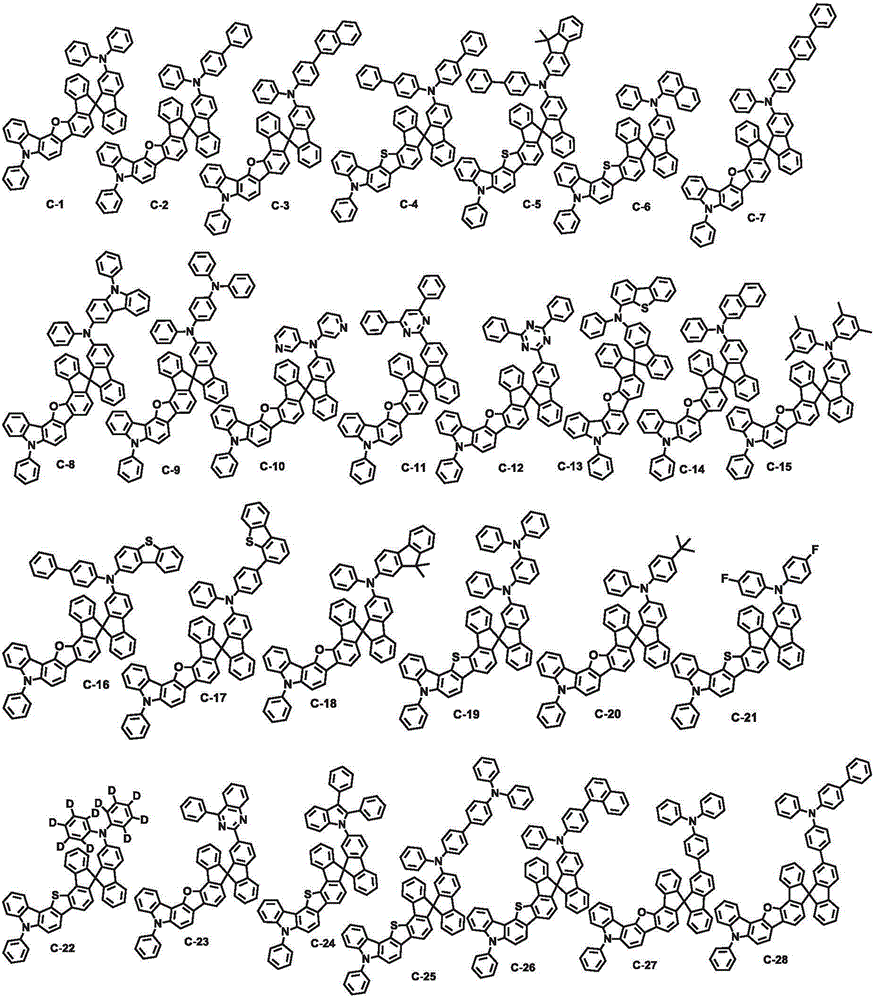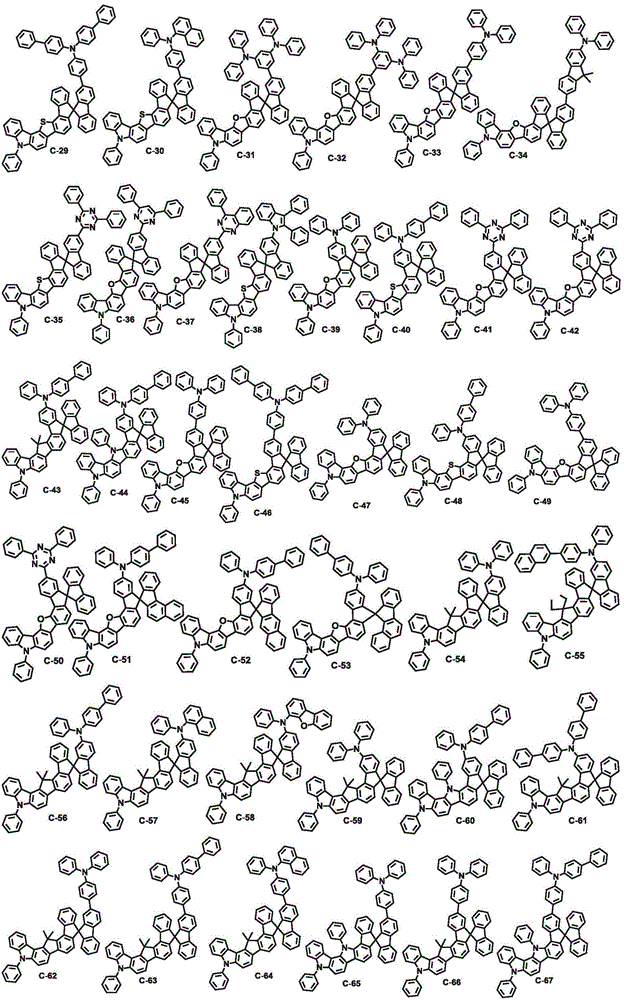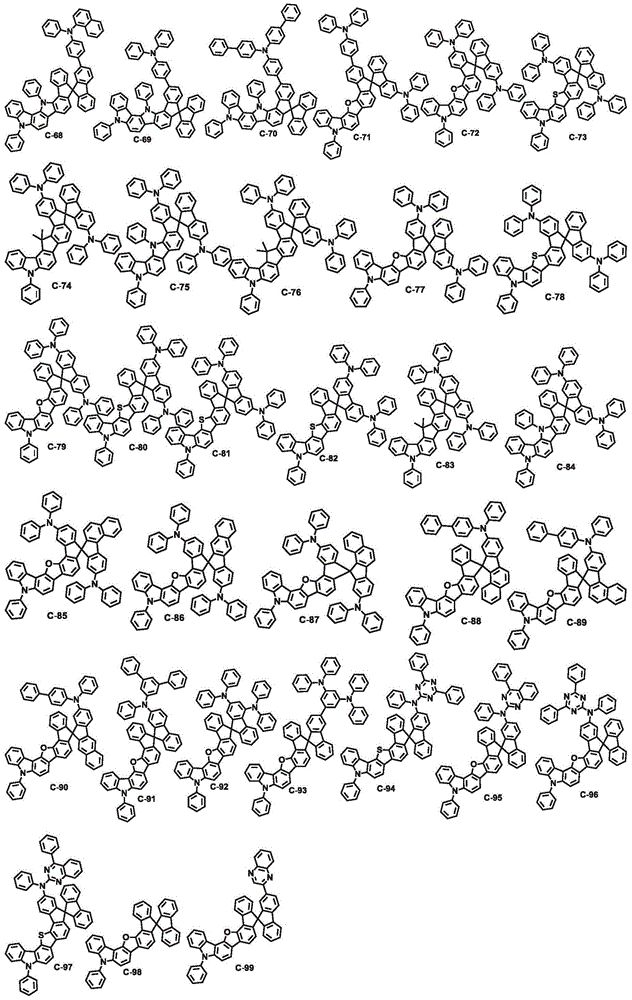Organic electroluminescent compounds and organic electroluminescent device comprising the same
A compound and luminescent technology, which is applied in organic chemistry, luminescent materials, chemical instruments and methods, etc., can solve the problem of low glass transition temperature, short service life of organic EL devices, inability to provide power efficiency, luminous efficiency, quantum efficiency and lifetime organic EL device and other issues, to improve the current characteristics, enhance the effect of power efficiency
- Summary
- Abstract
- Description
- Claims
- Application Information
AI Technical Summary
Problems solved by technology
Method used
Image
Examples
example 1
[0097] Example 1: Preparation of Compound C-98
[0098] Preparation of compound C-98-3
[0099]
[0100] 127 g (0.60 mol) of 4-dibenzofuran boronic acid (compound C-98-1), 100 g (0.50 mol) of 2-bromo-nitrobenzene, and 159 g of potassium carbonate ( 1.50mol) and tetrakis (triphenylphosphine) palladium [Pd (PPh 3 ) 4 ] 29 g (0.03 mol), the mixture was stirred under reflux for one day. The mixture was extracted with ethyl acetate 2L. The obtained organic layer was washed with 500 mL of distilled water, dried over anhydrous magnesium sulfate, and then the organic solvent was removed under reduced pressure. The obtained solid was separated by silica gel column chromatography and recrystallization to obtain compound C-98-3 (126 g, 87%).
[0101] Preparation of Compound C-98-4
[0102]
[0103] 4-(2-nitrophenyl) dibenzo [b, d] furan (compound C-98-3) 126g (0.44mol) was dissolved in triethyl phosphite [P (OTe) 3 ] 1.1 L, and then the mixture was stirred at 150 °C und...
PUM
| Property | Measurement | Unit |
|---|---|---|
| thickness | aaaaa | aaaaa |
| thickness | aaaaa | aaaaa |
| thickness | aaaaa | aaaaa |
Abstract
Description
Claims
Application Information
 Login to View More
Login to View More - R&D
- Intellectual Property
- Life Sciences
- Materials
- Tech Scout
- Unparalleled Data Quality
- Higher Quality Content
- 60% Fewer Hallucinations
Browse by: Latest US Patents, China's latest patents, Technical Efficacy Thesaurus, Application Domain, Technology Topic, Popular Technical Reports.
© 2025 PatSnap. All rights reserved.Legal|Privacy policy|Modern Slavery Act Transparency Statement|Sitemap|About US| Contact US: help@patsnap.com



